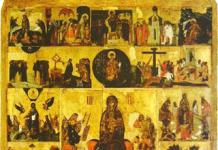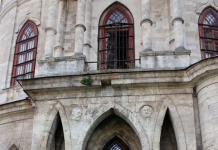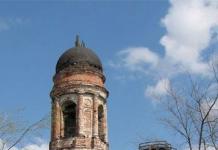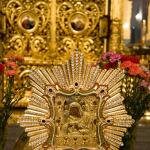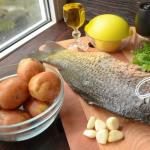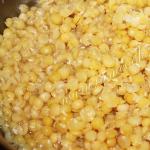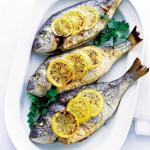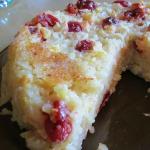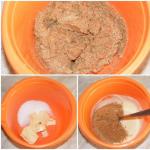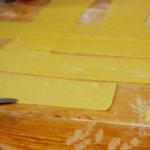Municipal educational institution "Oktyabrskaya secondary school named after. S. Ya. Lemesheva"
branch of the municipal educational institution "Mednovskaya Secondary School"
Research
in the subject “The World Around us”
Theme "My school, my class"
Completed by: Tikhomirov Artyom,
Pavlova Anastasia,
2nd grade students
Head: Lebedeva S.A.
primary school teacher
Kumordino 2016

Content
Page
Introduction…………………_____________________________________________ 3
Chapter I. From the history of the school 4
1.1Traces lead to history. 4
1.2 School named after Sergei Yakovlevich Lemeshev. 5
II Our class 7
2.1 A little about us 7
2.2 First teacher 8
Conclusion…………………._________________________________________ 9
Bibliography………………__________________________________________10
Appendix ……………….. _____________________________________11

Introduction
The school house is a forge of knowledge and a workshop of thoughts, where the child
surrounded by beauty, play, fantasy, creativity. The school house is a sanctuary
where they learn to be happy.
The relevance of this topic seems to us indisputable. Everything in life
It starts at school, and at school everything starts with the teacher. At school we don't
We are just gaining knowledge, learning a lot of new and interesting things, here we are learning
communicate and make friends.
Purpose of the study: to conduct observations that allow us to generalize
analyze and study the history of our school, our class.
Tasks:
1) expand your knowledge about the history of the school;
2) explore the history of our class and us in it
3) draw conclusions whether we are worthy students
Hypothesis: we are worthy students of our school.
Project type: complex (informational, creative).
Project duration: medium term
Research methods:
study of literary sources,
searching for information on the Internet,
conversations with teachers and school graduates,
study of photographic documents.
The practical significance of this work lies in the fact that the collected
the material can be used in lessons, during school
events, classes.
The research work consists of an introduction, two chapters, a conclusion,
bibliographies and applications.
Academic subject within which the work is carried out: “The world around us”.

3
Chapter I From the history of the school.
1.1 Traces lead to history.
One of the objectives of our project work was to expand our knowledge about
school history, so we asked our teacher about this question
Lebedeva Svetlana Anatolyevna. Svetlana Anatolyevna conducted a class hour
on the topic “History of our school.” This is what she told us.
Church parish wooden school, which was located in the village
Ivanovskoe, became cramped. (Annex 1)
And the Oktyabrsky state farm grew and developed. They came here whole
families, got jobs, stayed to live. A new school was needed, and
In the area, the construction of a school in the village of Kumordino was not envisaged.
This means that it was necessary to look for means somewhere other than. I took on this difficult task
young director of the state farm Kirillov Igor Ivanovich. (Appendix 2)
He finds funds, as well as a team of builders. By the end of the summer of 1977
The school building was erected, but finishing work still lay ahead. well and
cleaning up construction waste fell on the shoulders of teachers and students of Strenevskaya
school, that’s what our school used to be called. My parents also helped a lot.
The first director was Vasily Vasilievich Baranov. (Appendix 3)
On October 15, 1977, the school moved to a building located in the village.
Kumordino and currently the school is located at the address: village
Kumordino, Shkolnaya street, no. 5. Everyone was solemn and joyful
soul, and also unusual and unusual: after small, cramped classes, school
seemed very spacious, bright and elegant.
In July 1978 The leadership of the school was taken over by Alexey Mikhailovich Lukin.
He worked in this difficult field for more than six years. In 1984 Alexey
Mikhailovich resigned as director, but remained to work as a teacher at the school
history and labor until his 60th birthday.
After Alexei Mikhailovich Lukin, the hard work of directorship fell
on the shoulders of Antonina Ivanovna Chubisova. 1 (Appendix 4)
1 Materials of the October School: “Chronicle of the School”,

In 1987, Sysoev headed the Oktyabrskaya Incomplete Secondary School
Alexander Vitalievich. The main task of that time was to open a full school.
The dream came true only in 1996. (Appendix 5)
Having worked at our school for 20 years, Alexander Vitalievich Sysoev conveyed
school into the hands of Ermolaev Sergei Gennadievich.
1.2 School named after Sergei Yakovlevich Lemeshev.
Since March 2009, our school has been named after the outstanding Russian
singer, our fellow countryman Sergei Yakovlevich Lemeshev. The school is located
exhibition by Viktor Dmitrievich Vasiliev “The Life and Work of Sergei
Yakovlevich Lemeshev." (Appendix 6)
Our school had outstanding teachers, as evidenced by
memorial plaque to Antonina Ivanovna Chubisova. (Appendix 7)
On our school building there is a bas-relief of three partisan girls, one
of which our fellow countrywoman, primary school teacher, Klavdia Fedorovna
Tronova. 2 (Appendix 8)
And since November 2012, our school is a branch of the Municipal Educational Institution
"Mednovskaya secondary school."
The school where we study is a two-story building with 11 classrooms.
offices, computer class, gym, library, workshop, dining room.
Currently there are 44 students studying at the school.3
The school is taught by creative and friendly teachers.
“History of the Oktyabrskaya Secondary School named after. S.Ya. Lemesheva".
4
2 Materials of the October School: “History of the October Secondary School named after. S.Ya.
Lemesheva",
3 2. Summary of the extracurricular event “Our school is 35 years old”
5

The head of the branch is Liliya Vasilievna Minakova, she teaches lessons
history and social studies.
Valentina Nikolaevna Parutina has been working at our school for many years, she
teaches high school math and is also a math teacher
Ermolaev Sergey Gennadievich. Physics teacher Svetlana Yurievna Ivanova, and
Svetlana Yuryevna is also the organizer of extracurricular activities, which
take place at our school.
In primary classes we work: Lebedeva Svetlana Anatolyevna, Kazakova
Olga Anatolyevna, Staranchuk Ekaterina Vladimirovna.
Russian language and literature is taught at our school by Fomina Marina
Alexandrovna. Chemistry and biology Maya Petrovna Ivanova. English and
German language Musaeva Arzu Fikratovna, and physical education and technology Ivanov
Alexander Vasilievich.
And our director is the best, Vasilyeva Natalya Ivanovna.
Under her leadership there are two schools: MOU "Mednovskaya Secondary School" and
branch "MOU Oktyabrskaya Secondary School named after. S. Ya. Lemesheva”, as well as a branch of the MDOU
"Dmitrovsky kindergarten".
The school principal is at work,
And at home there is a woman and a mother!
How do you manage to do all this?
Great to combine?!
You have no equal in what you love:
You lead wisely.
And with you next to everyone believes,
That school is his home!
The director is not simple
Here is the school principal
Works with a big soul
He's doing well in school!
Conclusions:
The history of our school is very interesting.
The school has all the conditions for successful studies.
The school has creative and friendly teachers.

Chapter II. Our class
2.1 A little about us
In 2014 we came to school. We are first graders. Hooray! There are 5 in our class
girls and 6 boys.
Meet our 2nd grade
cheerful and noisy;
perky, sporty;
mobile and smart;
very creative;
victorious everywhere;
taker of prizes.
Conclusion: our class is friendly and cheerful.
And here is the office where we study
We're students! We love learning!!!
Learn something new!
Conclusion: our class loves to learn
Time for fun and time for business:
My class is striving for success,

Talent, I boldly admit,
Every child is endowed.
Conclusion: we are talented and we will try to prove it.
Students in our class have the opportunity to develop comprehensively.
This is facilitated by visiting various clubs at school.
We enjoy attending clubs: Entertaining Grammar, Choral
singing, Me and the computer, Choreography club, I am a citizen of Russia, Veselaya
mathematics, Entertaining English.
Conclusion: we study in different circles
7
.
In addition to studying, we take part in competitions. Me and my classmates
We take prizes.
Conclusion: we are smart and know a lot.
Various events take place in our class and school. This is the Day
teachers, Mother's Day, New Year, but the most memorable was the “Week
Elementary school."
Conclusion: we live together and have fun.
2.2 First teacher
There are only 11 people in my class. Our teacher Svetlana teaches us
Anatolievna. She has already taught us a lot: read, write, count. Our class
the most friendly and cheerful!
Svetlana Anatolyevna is our captain,
She leads us to new worlds
Together with her we will not be lost,
Let's get to new knowledge.
Conclusion: we have a wonderful teacher and we will achieve a lot.
Our class!
I'm in my class

I'm studying recently!
With the guys in everything
In ideas at the same time!
I don't know boredom with them,
And I love everything about them!
And our school is friendlier
There is no one else!
8
Conclusion
Based on our research, which allows us to generalize,
analyze and study the history of the school, explore the history of our
class and us in it, it can be argued that we are worthy students of our school.
We have studied the history of our school well, but not enough. IN
In the future, we plan to study the history of the school in more detail, as well as
biographies of outstanding teachers and graduates of our school.
Conclusion:
We try to be good
Find out where is good and where is evil...
How lucky we are,
That the best teacher and the best school are ours,
And the best in the world -
Our class!

Bibliography
1 Materials of the October School:
"Chronicle of the School"
“History of the Oktyabrskaya Secondary School named after. S.Ya. Lemesheva", etc.
2. Summary of the extracurricular event “Our school is 35 years old”
3. Memories of graduates and teachers.
4. Photos.
Project work on the topic:
"My school, my class"
Completed by a primary school teacher
MKOU "Progymnasium Orlyonok"
Osmanova Shavla Temirsultanovna
Content
Project passport……………………………………………………………3
I. Preparatory stage…………………………………….3-5
II. Main stage…………………………………………………………….....6-9
III. Final stage……………………………………………………..9
Conclusion………………………………………………………..9
Literature……………………………………………………10-11
Appendix……………………………………………………..11-26
Project passport
Subject: " My school, my class"
Project type: creative
Project participants : teacher, 4th grade students
Form of organization of activities : group
Project duration : medium term
Project product: album “My school, my class”
I. Preparatory stage
Relevance of the project
“Love for the vast Universe begins with love for a small bright star”
Akhmed Dzhachaev.
Let's imagine a huge Universe. There are many stars and planets in it. But of all the planets, the Earth stands out. She is so bright, green and beautiful! We are the inhabitants of this planet. The earth gives us a lot, but in return asks only one thing - careful handling of its riches. Sometimes it seems that she is very fragile. And I want to protect her and help her in some way. After all, our Motherland, Russia, is located on this planet.
Russia is a great power. When we look at a map of Russia, one small dot catches our eye. This is the city of Makhachkala, the capital of Dagestan. Dagestan is very dear to us. It is in this fertile land that there is a sweet and dear corner to the heart - the village of Babayurt. There is another place that is also very dear to us. This is our second home, our school is a gymnasium with the proud name “Eaglet”. A friendly family of classmates meets here every day. They went to kindergarten together and studied in the same class for 4 years. Therefore, they had enough time to get to know each other, fall in love and become friends.
Our school is like the sun, and our children are its rays. The light that “Eaglet” lit in the hearts of the students will never go out. And if every ray of light - a student of our school - retains this warmth and carries it throughout life, there will be more kindness, love and happiness on Earth.
Friendly, smart, talented kids study in the 4th grade. I am sure that they will grow up to be good people, will bring a lot of benefit to the Motherland, the people, and that “Eaglet” will be proud of them.
And we wanted to once again go through the path from first grade to the present day, to see what we were and what we have become, what we have achieved over the years, to create a memorable album reflecting the successes of students in our class at different stages of its development and in different directions, thereby identify yourself as part of the school's history. This is precisely the relevance of our project.
Objective of the project :
1. Increasing the personal confidence of each student in the class - a participant in project activities, his self-realization and reflection.
2. Development of awareness of the importance of teamwork (specifically, the creation of a class album), cooperation to obtain results from the process of performing creative tasks.
3. Development of research skills.
Project objectives :
1. Teach planning (the student must be able to clearly define the goal, describe the main steps to create the album “My School, My Class”, concentrate on achieving the goal throughout the entire work);
2. Develop skills in collecting and processing information and materials (the student must be able to select appropriate information and use it correctly);
3. Form a positive attitude towards work (the student must show initiative, try to complete the work on time in accordance with the established work plan and schedule).
Expected Result:
1. Students will acquire the ability to:
Organize your activities independently (obtain information and apply information in practice);
Evaluate the results of your activities;
Collaborate to overcome difficulties that arise while working on the project.
2. Students will develop:
General culture and erudition;
Efficiency and responsibility;
Love for the native land, for the native school;
II. Main stage
Plan for step-by-step implementation of the project problem
1.Motive-tional
1 Week
Introduces the concept, formulates the project problem, plot situation, goals and objectives, and motivates students.
Conversation “Guys, how wonderful we live at school, what a friendly class we have. There are so many events happening here! It would be great to create an album of our class, then we will certainly not forget a single event. Well, do you agree? Then, the next project awaits us - “My school, my class”.
Problematic issues:
Think about what events can be reflected in our album?
What do you know about the history of the school?
What was your first day of school like?
What cool events do you remember?
What would you like to say goodbye to the school?
Immersion in the problem. Brainstorming, showing interest. Everyone tries to remember an interesting event, an interesting lesson.
Under the guidance of the teacher, the goal of the project was formulated:
Target:
1.Develop research skills.
2.Create an album “My school, my class”
Tasks:
1.Learn planning. 2.Acquire skills in collecting and processing information
2.Planner
2nd week
1.Organizes the activities of students, offers to organize groups, provides assistance in solving project problems.
2. Organize a meeting with school graduates.
3. Meeting with veteran teachers. If necessary, organize assistance for them.
4. Organization of the competition
Drawings, models “School of the Future”.
5.Meeting with the school psychologist.
6.Round table. Meeting with young school teachers.
7.Meeting with the editor of the regional newspaper.
They break down into working groups, distribute tasks into groups, discuss possible methods of research, information search, and creative solutions.
Group assignments:
1st group: study the history of the school;
Group 2 - hold a competition “We draw a school”;
Group 3 - conduct an interview “I want to say about the school...”;
4th group - collect interesting photographs from the life of the class, write annotations;
Group 5 - remember and describe extracurricular activities of the class.
3Information retrieval
2-3 week
Monitors the progress of the project, coordinates the actions of project participants, supports and helps those who need help.
They work actively and independently, together they think through the form of the project, collect material, develop documentation. They consult with the editor of the regional newspaper (the editor is the grandmother of one of the students).
3.Reflective-evaluative
4 week
Acts as a participant in collective assessment activities, summarizes the results obtained, sums up the results of the project, and focuses on the educational aspect: the ability to work in a group for a common result. An important function of the teacher at this stage is to monitor the validity of children's value judgments.
Participate in collective discussion and evaluation of the results and work process.
III. The final stage. Presentation of the album “My school, my class”
Conclusion
To achieve results, students will do a lot of work: collecting information from the history of the school, surveying students, a competition for the best drawing on the topic “My School,” designing album pages “Stages of School Life.” During the work, students will learn a lot of interesting things from the history of the school, remember wonderful moments from the life of the class, and learn how to independently collect material for an album. Common work will bring children together even more. Students will learn to work in groups, obtain and analyze information, study and use various methods of obtaining information (literature, media, survey and interviewing methods), and process them (analysis, generalization). Students will never forget this knowledge, skills and abilities acquired by children through creative work. And this, perhaps, will be the most important result of the project. Ultimately, the goal will be achieved: the children will create the album “My School, My Class” with their own hands.
Literature
1.Zemlyanskaya E.N. Educational projects for junior schoolchildren.//Elementary school.-2005.-№ 9
2. Koganovich, Doctor of Philology. Sci. Lecture.20123. Scientific and practical journal “Head of Principal. Management of a modern school"№ 1/2007;
3. Methodology of the educational project. Materials of the city methodological
seminar. - M.: MIPKRO, 2001.
4. Scientific and practical journal “Head of Principal. Management of a modern school"№ 1/2007;
5. Pakhomova N. Yu. Educational projects: its possibilities. // Teacher,№
4,
2000.
6. Polat E.S., M.Yu. Bukharkina, M.V. Moiseeva, A.E. Petrova "New
pedagogical and information technologies in the education system."
M., 2004.
Application
Album “My school, my class.”

The results of the “We Draw School” competition showed that children really love their school. The school is depicted in bright, rich colors and always in the rays of the sun.

Words of sincere and warm gratitude to the school, to the teacher in flower petals, the children pasted them into the magazine, turning the spread of pages into a cheerful flowering meadow.
A flock of foolish little ones trustingly huddled around the teacher, next to whom they feel so good, calm and comfortable. Together with the teacher, the children mastered first grade and became real schoolchildren.






Project work “My school, my class”
Imagine a huge Universe. There are many stars and planets in it. But of all the planets, the Earth stands out. She is so bright, green and beautiful! We are the inhabitants of this planet. The earth gives me a lot, but in return asks only one thing - careful handling of its riches. Sometimes it seems to me that she is very fragile. And I want to protect her and help her in some way. After all, on this planet is my Motherland - Russia.
Russia is a great power. When we look at a map of Russia, our eye is drawn to one small dot. This is the city of Makhachkala, the capital of Dagestan. Dagestan is very dear to us. We are delighted by the snowy peaks of the mountains, and the restless sea is pleasing to the eye. It is in this fertile land that there is a corner dear and dear to our hearts - the village of Babayurt. There is another place that is also very dear to us. This is our second home, our school - a gymnasium with the proud name "Eaglet". A friendly family of classmates meets here every day. They went to kindergarten together and studied in the same class for 4 years. Therefore, they had enough time to get to know each other, fall in love and become friends.
Our school is like the sun for them, and our children are its rays. We will try to ensure that the light that “Eaglet” lit in our hearts never goes out. And if every ray of light - a student of our school - retains this warmth and carries it throughout life, there will be more kindness, love and happiness on Earth. There are friendly, smart, talented kids in our class. I am sure that they will grow up to be good people, will bring a lot of benefit to the Motherland, the people, and that “Eaglet” will be proud of them.
In a few months they will fly away in different directions and become another page in the history of our educational institution.
And we wanted to once again go through the path from the first grade to the present day, to see what they were and what they have become, what they have achieved over the years, to create a memorable album reflecting the successes of students in their class at different stages of its development and in different directions, thereby identifying 4th grade as part of the school's history.
So we started the project “My School, My Class”.
The progress of the project work was clearly outlined: weekly planning was drawn up; it is determined what types of activities should be learned at each stage of design; stages of project activity, didactic and information support, instrumental equipment, types of activities at school and at home.
We started work by making a list of all the information we wanted to include in the album.
The collected material was divided into the following logical groups:
1. General information about the gymnasium;
2. Information about the class;
3. Works of class students.
When compiling the album, we followed the same sequence of material placement.
Thus, the initial pages of the album contain information about our educational institution, photographs of the gymnasium building, and the teaching staff. The last one was made at a school festival dedicated to Tolerance Day, where our class performed. Guests present were the heads of the district administration and the education department, and the editor of the local newspaper. We heard many enthusiastic words addressed to us that day. Our teachers and guests wanted to take a photo with us as a souvenir. We were very honored and gladly joined.
At this stage, we pursued the goal: to find out the attitude of our students to the school, how they see it, what feelings the image of the school evokes. Looking at the students’ work, you notice that in each drawing the school is depicted in bright, rich colors and always in the rays of the sun. This is no coincidence. Perhaps this indicates that the guys have a very good time within its walls. The psychologist confirmed our findings, saying that, indeed, children feel comfortable, protected at school, and feel comfortable here.
Our students also took a positive approach to composing their statements: having written words of sincere and warm gratitude to the school and teacher in flower petals, they pasted them into the magazine, turning the spread of pages into a cheerful flowering meadow.
Conclusion: yes, we really love our school, our class, our teacher!
Most of the album was taken up with information about the class. Our entire school life from first to fourth grade is clearly presented. This section was called “Stages of School Life”. Following the given logic, we divided the collected material into 4 groups, distributing it according to the years of study in each class. Having grouped the photographs in this way, we titled each stage, indicating the main task facing the class at that time.
First grade: “Be a schoolboy.”
A flock of foolish little ones trustingly huddled around the teacher, next to whom they felt so good, calm and comfortable. Together with the teacher, the children mastered first grade and became real schoolchildren. The next year, in second grade, we set ourselves the task of learning to make friends and organize our vacation.
It’s immediately noticeable how we have grown, become more confident, and feel like real owners of our school. Anyone looking at this page can be convinced that we successfully completed this task: hikes, excursions, joint games - everything contributed to us getting to know each other better, becoming friends and loving each other. We lived the next year, 3rd grade, under the motto “Beauty will save the world.”
Since our gymnasium is an educational institution with a priority direction of artistic and aesthetic development, we attend classes in choreography, theatrical art and visual arts. We consider it our duty to achieve noticeable success in the priority direction of our gymnasium, especially since we are happy to introduce these types of art in our classes.
This year our choreographic ensemble “Zvezdochka” was formed, the pride of not only the class, but the gymnasium. Our “Zvezdochka” shone not only at school holidays, but also at all regional events.
Our theatrical productions did not leave the audience indifferent.
In fourth grade, we started the school year by posing the problem “I can do everything myself.” Graduates look from the photos on this page. Here they are, serious, concentrated, sitting in class and listening carefully to the explanation of a new topic. Yes, we know how to listen and absorb information in class. We are thinking about ways to solve the problem. Rest assured, we will resolve it!
Our subject weeks and Olympiads are interesting: we look for and find interesting material for competitive subject newspapers, then together we complete the tasks of each newspaper. We carry out design work on the subject.
Our successes in sports are also significant. This is facilitated not only by physical education lessons. Many of us attend the regional sports school and play different sports.
But we are not only school students, but also citizens of our country, patriots of our Motherland. We cannot be left indifferent to everything that happens in our country. So the Olympic Games in Sochi became a big event in the life of our class. Every morning we started by discussing sports news from Sochi, sharing our impressions and emotions. The young figure skater Yulia Lipnitskaya became our idol. We really loved Adeline Sotnikova. There was no limit to pride for our Russia, which took first place in the number of medals!
This is how we have become smart, skillful, conscientious people, ready to learn further and better, set ourselves tasks and solve them.
We learned to be friends, appreciate and take care of good friends and made a very valuable conclusion for ourselves: our fate is in our hands.
This is what we wanted to tell you about the school where our Motherland begins for us.
This work taught us how to obtain and analyze information. We studied and used various methods of obtaining information (literature, library collections, media, survey and interviewing methods), processing it (analysis, generalization, comparison with known facts, reasoned conclusions) and creating an album.
PROJECT SUMMARY
AROUND THE WORLD
Teacher: Romanenko T.V.
Class: 1
Subject: Presentation of the project: “My class and my school. »
Target: Learn to work on projects.
Tasks : Learn to work in an individual project, do your part of the work and be responsible for the quality of this work. Learn to discuss student performances; evaluate your own achievements and the achievements of other students.
Develop practical skills, creativity, leadership qualities.
To foster a sense of camaraderie and friendship, to create the necessary conditions for students to be active, to activate students to independently acquire knowledge and interest in the subject.
Equipment: blackboard, colored chalk, drawings, A4 sheet with rules of behavior in school and class, A4 sheets with poems, riddles, photos.
Planned personal results:
Forming a respectful attitude towards other opinions.
Formation of an attitude towards the presence of motivation for creative work and work for results.
Development of independence and personal responsibility for one’s actions.
Developing skills to collaborate with peers in different situations.
Planned meta-subject results:
Mastering ways to solve problems of a creative and exploratory nature.
Formation of the ability to plan, control and evaluate educational activities.
Formation of the ability to understand the reasons for the success/failure of educational activities.
Active use of speech and information and communication technologies to solve cognitive problems.
Using different search methods.
Willingness to listen to the interlocutor and conduct a dialogue.
During the classes.
Greetings.

Today is the protection of our projects.
- Name the general theme of the projects. (Children name the topic of the lesson themselves)
Two weeks ago we determined the direction in which we need to work.
And today we are present at the last stage - the defense of the project.
I will remind you of the project protection rules later.
Introduction.
Have a seat, hello,
Watch and participate -
You don’t have to be discouraged, we will present the class!
Gathered here in all its glory
We are all together as a class:
We are worried, embarrassed,
We blush, we stutter...
So, let's figure it out - what do they teach at school?
Song "What They Teach at School"
Children's poems (from dedication to first graders)
Learn to learn -
We go to first grade
Everything is new, everything is new,
Everything is new with us!
We wear backpacks, we are big,
Books, pens and notebooks.
Now we are not just children:
Now we are first graders ! (together)
I'm in a hurry, I'm rushing to school.
Hooray! I'm a schoolboy! I'm studying?
And here is my class.
My 1st "B".
I studied here for two months.
I learned so much that, friends,
I give you my word -
I turned out to be a “scientist”!
We put our hands like this, (shows)
And we are still waiting for the task.
If you want to say
Either get out or get up
You have to hold your hand like that (shows)
And you will definitely get five.
Always keep it in order
Books, copybooks, notebooks!
8. I should know perfectly well
Fighting at school is not decent!
You need to listen to your mother
You need to listen to dad
After all, on the first channel
They said very clearly
So that everyone at school is friends.
Everyone in class is busy
From bell to bell,
It's just a pity that there's a change
The school is very short.
We love a clean, bright classroom!
There we read the words.
Well, thirdly,
I’m already writing notes myself!
And grandma says:
“My grandson is a child prodigy!”
How much do we learn in school?
How many books will we read?
We're on this path
Ten years still to go!
Let them call us “seven-year-olds”
Let them not mark us.
We don't keep diaries
After all, we are... students!
Host: And now we will find out what difficulties our students encounter.
15. I asked Galochka:
What's the hardest thing?
She said:
Sticks
Writing is the hardest thing.
16. Then I asked Zhenya:
What's the hardest thing?
He said:
Multiplication
X is the hardest.
17. - What is the most difficult thing on Earth? –
I turned to Vasya.
The hardest thing is -
He answered,
Study in first grade
Physical education minute:
Presentation of children's projects
I remind you of the rules of protection:
a) The student says his name and shows his work; tells what has been done on the topic; did everything work out (self-esteem).
b) the whole class evaluates the work.
At the end of the work, the teacher gives medals to the children.
Presentation of teacher's work.
My class is the most mischievous!
Look, this is what it is (photo on multimedia)
To manage the family
To have comfort, peace,
We need to be together more often
We need to get everyone involved and make friends.
Let's go to the museum, to the library,
To the zoo, to the disco.
Everyone loves to dance
Play noisy games.
Sport helps you learn
Makes you appreciate time.
Be fast and careful
And learn all the lessons.
School work at school
Performed by children.
And with hunting and with desire,
With interest and attention.
I love them for this!
And I give out awards:
For successful studies,
For your cordiality and for your work,
For active work
Rewards are always waiting for them!
Holidays and birthdays
We celebrate together in class.
We gladly invite our friends,
We invite mom and dad.
Friendship has a place of honor -
We all need to remember this!
We need to make all the guys friends,
Life is easier this way, they say.
A friend will always come to the rescue
In the classroom, at school, in the yard,
In class, during recess, or
In a computer game.
Their friendship is my support
And sometimes there is hope.
Friendship will always help them
And the friendly class will pull you up.
And now I confess
My class and I are now friends!
I'll tell you a secret for you -
This is the coolest class!
Work on the topic of the lesson. (if we have time!)
Our school was founded a long time ago, in 1936. I, your teacher, studied there, and the parents of many of you studied here! And on the first of September you also became students of our school. During the first week of school, we took you on a tour of the school.
Our school has spacious classrooms, a canteen, a library, a sports hall and an assembly hall.
Today you will present to your classmates a work in which you reflect not only data about the school, but also your attitude towards it.
Final word.
Guys, in six months you and I have become closer and will be happy to live in a big school house!!!
And in order to live peacefully, you have rules on your desks that you will remember for the rest of your life. Color and save!!!
Place a smiley face in your house: happy if you liked the lesson, sad if you were bored.
Performed by Evgeniya Taleeva, student of 1st “G” class at MBOU “SO School No. 4”
1. My class.

I study in the 1st grade of the 4th school in Naryan-Mar. There are 23 students in our class: there are more girls than boys. Our class teacher's name is Artykova Dilbar Saidalievna.
Our classroom is light, warm and cozy. This is where we learn and play. We have a corner for games, where during breaks or in our free time we communicate and play different games: we read and watch children's magazines, put together puzzles. Each of us has a separate desk - table and chair.
Dilbar Saidalievna has decorated stands in the classroom: there is a classroom corner with a schedule, a list of students and other various information, pictures of the seasons, our certificates and a stand with our crafts.
. 

In our class there is an indispensable learning aid - the school board. We look at it every day and learn how to correctly write letters and numbers in a notebook. Not a single lesson is complete without it. We have two of them.
Our classroom also has a closet for skis and ski poles, which is very convenient. It was made by my classmate's dad. Now you don't have to worry about your skis falling, breaking or getting lost. There are also other cabinets for notebooks, educational materials and manuals.

Our classroom is decorated with different indoor plants. We like to help the class teacher look after them. After all, plants and flowers are a part of summer; they always make us happy.
2. Classmates - friends.

My classmates are my friends, we spend time together during lessons and during breaks. I saw them for the first time on September 1 and gradually got to know them all. I knew only one of my classmates for a long time, this is Mitya Korepanov, because he and I went to kindergarten together in the same group.


You will never get bored with my classmates! Recess is often noisy, as almost all the boys and girls in our class are running around and screaming loudly. Someone brings interesting toys from home to play with, and everyone immediately goes together to see what it is.
Sometimes someone comes to class and forgets a pen or a pencil at home; any of us is ready to help our classmate. Everyone in the class helps each other out.
In class I am more friends with Sveta Stankevich, Nikita Safonov and Mitya Korepanov. I am also friends with other classmates, but less so. One day, Liza Kolisnichenko invited me to her birthday: then we went horse riding, fed them from the palm of our hand, and then went to her house to drink tea and cake and have fun.
My classmates love sports. Almost everyone knows how to ride a bike, boys play football, girls roller skate, and in winter we go skiing. Last fall, our physical education teacher Nadezhda Borisovna held a “Health Day” event; all the first classes, and there were 5 of them, participated in it. Of course, Dilbar Saidalievna was with us.




We also participated in “Funny Starts”, there were 8 people in our team. Then at the competition in November 2014 we took 3rd place, but we were not at all upset, because the main thing is not victory, but participation!!! And they gave us a certificate for this place, we were very happy!




This is how we spend time fun and friendly and even outside of lessons and school we meet with classmates, they are also my friends.
3. My teacher.
Dilbar Saidalievna is my first teacher.




We respect and appreciate her, because she taught us a lot! Now we know how to read well, how to write correctly and how to count. We know the rules: for example, CHA, SHA write with the letter A, ZHI, SHI write with the letter I.
On November 1, 2014, she held a festive tea party in connection with the end of the first quarter. We came to school then to play, relax, drink tea with our mothers and grandmothers, and someone came with their fathers. Everyone brought with them a sweet treat they made with their own hands. Some other classmates showed who could do what: someone read poetry and sang, someone showed their drawings and crafts.


All my classmates played games, it was a lot of fun!




Dilbar Saidalievna knows how to keep us busy with something interesting. We performed at the “Stars 4th” talent festival. Our teacher always supports us in everything, and we try not to let her down!




We will never forget our teacher, because she taught us to read and write for the first time in our lives. She teaches us not only school subjects, but also how to behave, that it is important not to be late and always do everything on time, not to offend each other, to appreciate what we already have.
My school.
I study at the fourth school in the city of Naryan-Mar. The new building of this school was built not so long ago, but the school itself has already existed for 75 years. Last year she celebrated her anniversary.


Our school opened in 1939, at that time it taught children only up to the 7th grade; it was a junior high school. It was then converted into an eight-year school in 1962. It was only in 1991 that it became a secondary school. Then the first director of the school was Vasily Varfolomeevich Kolotov. Now the director is Savina Margarita Yurievna.
In 1999, to mark the school's 60th anniversary, a school museum was opened.

On September 2, 2013, the first cadet class 5 “K” was opened at this school, in which 26 cadets are studying. During the festive assembly, the head of the Ministry of Internal Affairs and the director of secondary school No. 4 in Naryan-Mar, Margarita Savina, signed an agreement under which the Department of the Ministry of Internal Affairs will provide patronage over the cadet class.


The school itself has repeatedly become a prize-winner and winner in various All-Russian and district competitions, including the All-Russian open competition “Pedagogical Innovations-2005”, the district competition of schools actively implementing innovative educational programs within the framework of the priority national project “Education” and many others The best students and the best teachers, for many years of conscientious joint work, were included in the encyclopedia "Gifted Children - the Future of Russia", which is published with the support of the Ministry of Education and Science of the Russian Federation.
 Emblem of School No. 4
Emblem of School No. 4
“Tomorrow begins today” is the slogan of our school.
A project on the theme “My Family” plays a huge role in school life. Children, teachers, and even kindergarten teachers really like this section. Family is an integral part of our lives, so we will have to pay special attention to it. But how to properly organize on this topic? What to focus on? What techniques are the most popular in elementary schools in this area? More on all this later.
Goals and objectives
A project on the topic “My Family”, just like any other, pursues certain goals and objectives. Without them, all activities make no sense at all. So you need to clearly understand why you are conducting certain classes, what you need to teach children.
In general, “My Family” is a topic that in itself is designed to teach children to recognize themselves as members of society and to value the bonds of kinship. It should reflect the importance of belonging to one or another “cell of society.” Love and respect for are also areas that should be implemented during the project.
Of course, “My Family” is an area that demonstrates to children the value of loved ones. It teaches moral standards and shows how to stand in life. In addition, among you can also find points that imply the development of communication skills, writing stories, as well as improving research activities. After all, you will have to thoroughly study your family in order to talk about it in class.
Class hour
In principle, each teacher chooses exactly how to conduct classes on our current topic. The best tips and tricks will be presented later. As we have already found out, the project is aimed at introducing children to the family, setting priorities and values in life, as well as developing the children. Nothing special, right?
At the very beginning, it is recommended to spend a so-called class hour with the children. “My family” is a topic that, as a rule, requires discussion. During this period, your task will be to clarify who is included in it. After all, children in elementary school do not always clearly understand what is being said. This will be enough for the first conversation. But then you will have to prepare thoroughly to make the project seem interesting and useful. What techniques should you use?
Story
Be sure to let the children prepare the story “My Family.” It doesn’t matter which class we are talking about - first-graders or older children. Everyone is capable of first-class talking about what is happening and about the surroundings.

So assign the children to write the story "My Family." Let everyone tell the class about who they live with and which relatives they have. It is not necessary to require long speeches; just a few phrases from each child are enough. Usually the floor is given at a class hour held at the very beginning of studying the topic.
This technique is always used by everyone. A project on the theme “My Family” is simply unthinkable without a story about the “unit of society.” All children will be interested in talking about their relatives and listening to their classmates. At least in elementary school this is still the case. But among older children, the stories are not particularly successful.
Traditions
Each family is a separate unit of society. And it has its own rules of behavior, some of its own rituals and principles. This is very important for the project called "My Family". “My Traditions” (or rather, “Traditions in My Family”) is a pretty interesting topic to present to the class.
Instruct the children to write a story or otherwise talk about what customs they have in their families. Maybe it's a weekly Sunday walk in the park, Saturday dinners together, or something else. Let all this be included in the story of the family.

This approach teaches not only to listen, but also to obtain information and present it correctly. In addition, children in primary school will be really interested in listening to stories on the topic “My family - my traditions.” Yes, and talk about them too. After all, the more non-standard customs in the family, the more interesting it is. Children seem to show off to each other. This is a great chance to introduce them to our topic today.
Photo
Another technique is to ask them to bring photos of their family to class. Let children not only talk about their relatives, traditions and customs, but also show it. In elementary school, this technique is not very rare, but it can interest many.
The use of real photographs is an original and modern solution to make the project “My World - My Family” interested in children. They all love not only to listen, but also to watch. And real images will attract kids' attention to the process. Just what is needed.
Tree
After you've talked to your children about family composition, you can assign them some homework. A project on the topic “My Family” often involves creating a wall newspaper, and an individual one at that. It's called a family tree.
Assign the children to create their family tree. Let parents take part in this too. Don’t limit your children in anything, because everyone has plenty of relatives. Or maybe not very much. In any case, this way you will be able to attract not only students to your project, but also their parents. And this brings people together.

After the children have presented their family trees to you, set up a display. Or ask them to write a story about a family using a tree. Also a creative approach to talking with children in the chosen area.
Composition
For an older age, it would be nice to also assign the best one." This way, the child will develop not only creative and speech skills, but also written ones.
It is not necessary to require any long speeches from children. Have them simply write down whether they think their family is the best and why. A few paragraphs will be enough. You can then ask them to read the essays in front of the class. Especially if you don't have a lot of children in the group. During the project, children must understand that their families are actually the best thing that can be for them. And at the same time learn to justify your point of view.
Not just by blood
Family is a flexible concept. It usually means only consanguineous ties. But any self-respecting teacher will be able to explain that blood relationship is not the only criterion that helps to understand what a family really is. Sometimes it happens that a non-relative can become part of your social unit.
So this moment will have to be explained to the kids. For example, draw the analogy “My class is my family.” After all, they say that school is a second home. This means that the society in which the child lives here is also a family. Although not consanguineous. In general, for elementary school students understanding this topic may be slightly difficult. But you will have to try to make your children understand that it is not enough to be a blood relative to be considered a real part of the family. Sometimes even a stranger can become closer to you than someone else. But with older children everything is much easier. Most likely, they have already encountered the fact that some family members (blood) are not on the best terms with each other. Therefore, awareness of kinship in different senses will come faster.

Drawings
The project on the theme “My Family” is something that attracts many. Especially children. After all, you can boast about your family, some traditions and customs, features that exist only within one “cell of society.”
To involve children in the project, it is recommended to conduct an art lesson on this topic. Drawings "My Family" are perfect for exhibitions, as well as for children's stories. Instruct them to depict in any way how their family appears to the children. This can be a drawing or appliqué.
What exactly can be depicted? Anything that the children deem necessary, but related to the family. For example, you can draw how they celebrate some event. Or you can simply depict the family members who are most loved by the child. Here, let the kids choose for themselves.
After the drawings and applications have been collected, hold a parent meeting or just an exhibition. Let adult family members look at the creativity of their children. This is not only interesting, but also useful.

Conversation with parents
Family is, of course, good. But not always and not everyone has good relationships at home with relatives. So it won’t hurt to conduct a so-called educational without children at the end of the project. It would be nice to invite a child psychologist who can help if it turns out that something is going wrong in a family.
The most informative moment will be the children's drawing/applique. The psychologist will be able to quickly analyze each image, after which he will provide information about how the family actually appears in the eyes of the child. If problems or their beginnings are identified, a conversation with parents will help eliminate them. Try to ensure that everyone is present at this conversation.
In principle, you can also do without a psychologist. Although such children's specialists are still actively invited to elementary schools. Remember that a project on the topic “My Family” without summing up and analysis cannot be considered completed successfully.
Presentations
Well, this, in principle, ends the discussion with children and parents of our current direction. Only now the teacher will have to properly prepare for each lesson. “My Big Family” is a direction that requires special preparation from us. What might be required in the lessons?
The best technique is to use presentation when telling stories and dialogues with children. They can contain several examples of families (happy ones, this is important), as well as various thoughts about “units of society,” proverbs and sayings. “My big family” is a topic that requires special preparation.
You can prepare a presentation yourself or take a ready-made one. There is no significant difference. The main thing is that the slides can explain to children the importance and value of family. Both by blood and not.

It is also recommended to prepare a separate presentation at the end of the project, which will depict the entire process gone through with the children. Even if there are only photographs here, this technique is an excellent option for summing up the results. The way children talk about families, exhibitions, essays, family trees - all this should fit on your slides. Excellent presentation of the topic. In elementary school, children will be interested to see exactly what they looked like from the outside. Yes, this technique is also suitable for parents. You can quickly and clearly demonstrate what exactly the children did in class and how hard they tried.
That's all. The discussion of the project on the topic “My world is my family” has come to an end. Now we know the most relevant and successful techniques used in this direction. The main thing is to explain to children the importance of family, to instill in them family values. If you organize thematic classes correctly and interestingly, you will quickly achieve the desired result. “My family is my life” - this is the concept that should be imprinted in children’s memory.
